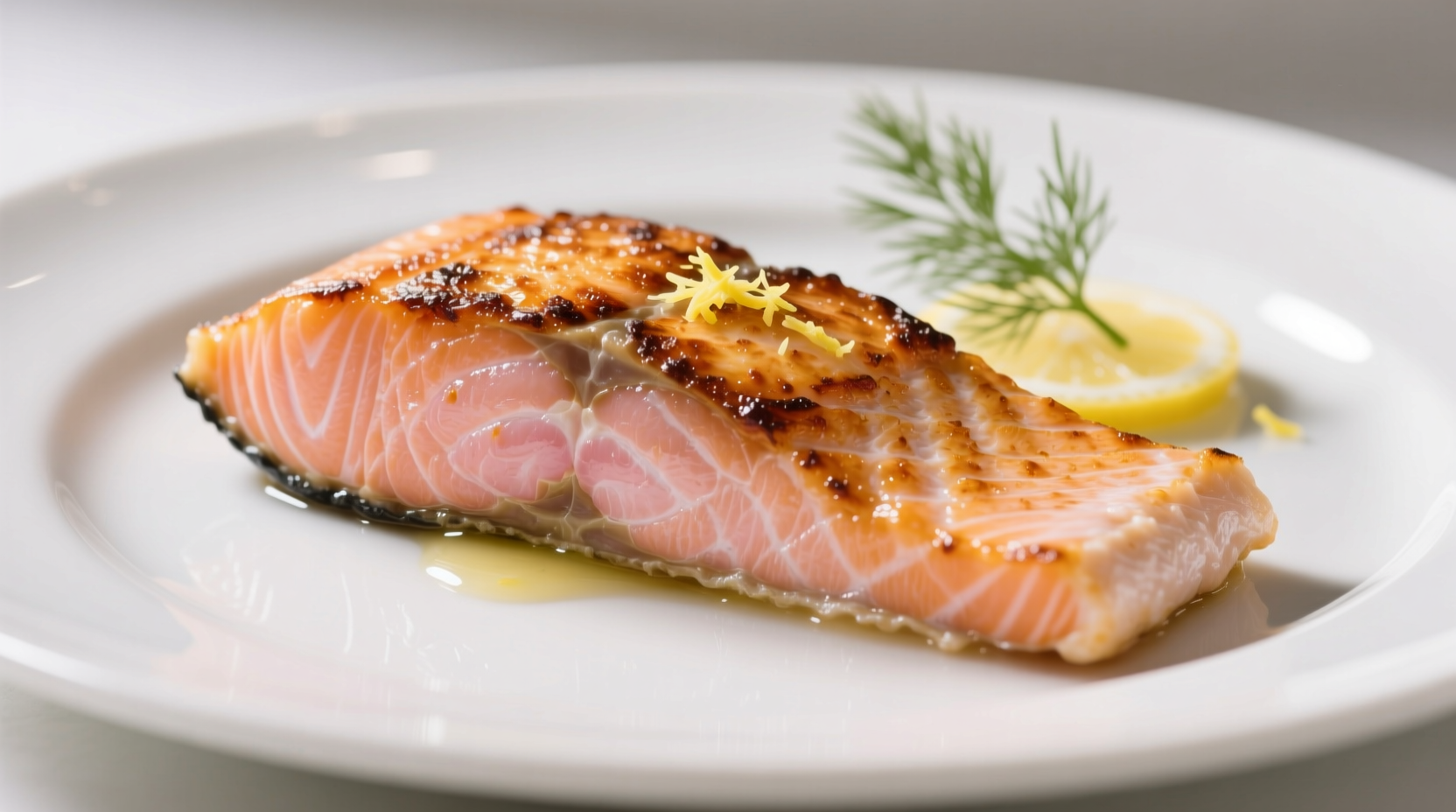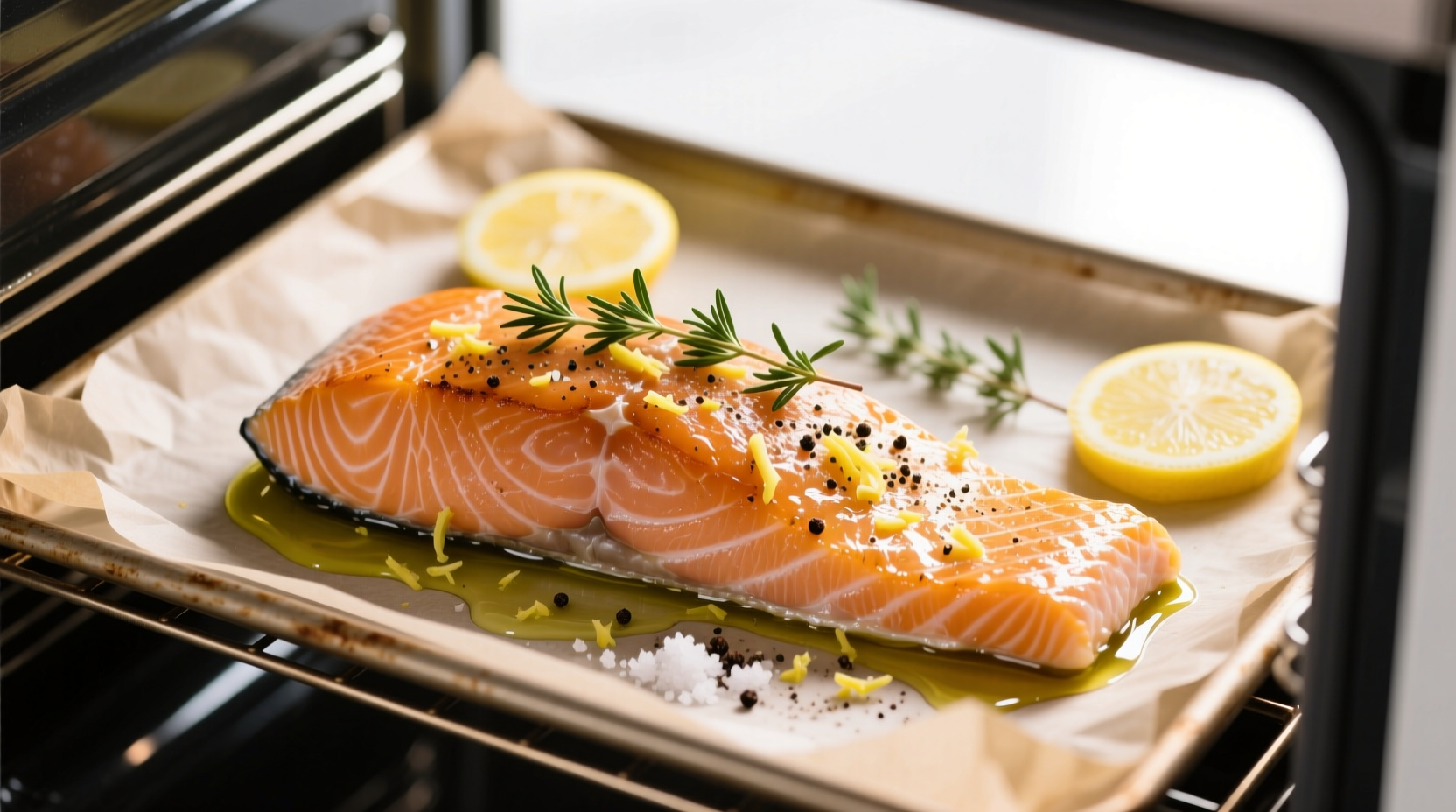Getting the oven temperature right for salmon transforms an ordinary weeknight dinner into a restaurant-quality meal. This precise temperature range ensures your salmon cooks evenly without drying out, creating that perfect flaky texture professional chefs achieve. Whether you're a beginner cook or seasoned home chef, understanding the science behind salmon cooking temperatures will elevate your results every time.
Why Temperature Precision Matters for Salmon
Salmon's delicate fat structure responds dramatically to heat variations. Too low, and you'll end up with soggy, undercooked fish. Too high, and the proteins tighten excessively, squeezing out moisture and creating dry, chalky results. The 375°F-400°F sweet spot allows for proper protein denaturation while preserving the fish's natural oils.
| Temperature Range | Resulting Texture | Best For |
|---|---|---|
| 325°F-350°F (163°C-177°C) | Very moist, slightly raw center | Rare preparation, sous vide finish |
| 375°F-400°F (190°C-205°C) | Flaky yet moist throughout | Standard preparation, most recipes |
| 425°F+ (218°C+) | Crispy skin, potentially dry interior | Skin-on fillets needing extra crispness |
The Science Behind Perfectly Cooked Salmon
Understanding the internal temperature transformation explains why oven settings matter. As salmon heats, its proteins begin coagulating at 120°F (49°C), with the ideal doneness occurring between 125°F-140°F (52°C-60°C). The USDA recommends cooking fish to 145°F (63°C) for safety, but many chefs prefer removing salmon at 130°F-135°F (54°C-57°C) since carryover cooking will raise the temperature 5-10 degrees.
Research from the FDA Food Code confirms that proper temperature control prevents foodborne illness while maintaining quality. Their guidelines note that fish continues cooking after removal from heat, making precise temperature management essential.

Your Step-by-Step Salmon Cooking Guide
Preparation Essentials
- Pat fillets completely dry with paper towels
- Season skin-side generously with salt 15 minutes before cooking
- Room temperature fish cooks more evenly than cold fish
Temperature & Timing Guidelines
Preheat your oven to 400°F (205°C) for standard preparation. For convection ovens, reduce by 25°F (14°C). Place salmon skin-side down on a parchment-lined baking sheet. Cook for 10-12 minutes for 1-inch thick fillets, or until the internal temperature reaches 130°F-135°F (54°C-57°C).
Checking for Perfect Doneness
Don't rely solely on time. The best indicators are:
- Flakes separate easily with a fork but remain connected
- Center appears slightly translucent, not raw
- Internal thermometer reads 130°F-135°F (54°C-57°C)
Contextual Temperature Adjustments
Several factors require temperature modifications:
- Thick cuts (1.5+ inches): Start at 425°F (218°C) for 5 minutes, then reduce to 375°F (190°C)
- Skinless fillets: Cook at 375°F (190°C) to prevent drying
- Cold kitchen environments: Increase by 25°F (14°C) to compensate for heat loss
- Convection ovens: Reduce standard temperature by 25°F (14°C)
Avoiding Common Temperature Mistakes
Many home cooks make these critical errors:
- Not preheating the oven completely before adding salmon
- Opening the oven door repeatedly during cooking
- Using glass dishes that retain heat differently than metal
- Not accounting for carryover cooking after removal
The USDA Food Safety and Inspection Service emphasizes that proper temperature control prevents foodborne illness while maintaining quality. Their research shows that fish continues cooking after removal from heat, making precise temperature management essential for both safety and quality.
Perfecting Your Salmon Results
For consistently excellent results, follow these professional tips:
- Use an oven thermometer to verify actual temperature
- Place salmon in the center of the oven for even heating
- Rest for 5 minutes after cooking before serving
- Finish with a squeeze of fresh lemon juice
Frequently Asked Questions
What is the lowest safe temperature for cooking salmon?
The USDA recommends cooking salmon to a minimum internal temperature of 145°F (63°C) for safety. However, many chefs remove salmon at 130°F-135°F (54°C-57°C) since carryover cooking will raise the temperature 5-10 degrees after removal from the oven.
How long does salmon take at 350°F compared to 400°F?
At 350°F (177°C), standard 1-inch salmon fillets require 15-18 minutes, while at 400°F (205°C) they need only 10-12 minutes. The higher temperature creates better browning and crispier skin while maintaining moisture through shorter cooking time.
Can I cook frozen salmon without thawing first?
Yes, but increase cooking time by 50% and start at 375°F (190°C). Place frozen salmon skin-side down and check internal temperature after 15 minutes. The key is ensuring the internal temperature reaches 130°F-135°F (54°C-57°C) before removing from oven.
Why does my salmon always stick to the pan?
Salmon sticks when the skin isn't properly dried or the pan isn't hot enough. Pat skin completely dry, season generously with salt 15 minutes before cooking, and ensure your baking sheet is properly preheated in the oven before adding the fish. Using parchment paper eliminates sticking completely.
How do I get crispy skin on oven-baked salmon?
For crispy skin, start with completely dry skin, season with salt 15 minutes before cooking, and place skin-side down on a preheated baking sheet. Cook at 400°F (205°C) without flipping. The high heat renders the fat between skin and flesh, creating perfect crispness in 10-12 minutes.











 浙公网安备
33010002000092号
浙公网安备
33010002000092号 浙B2-20120091-4
浙B2-20120091-4